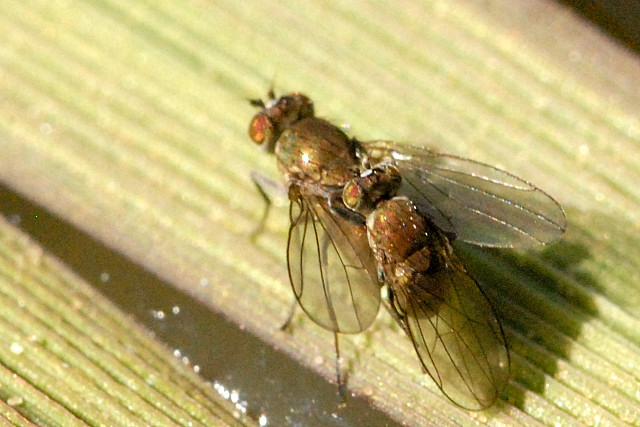|
Nuphar Subintegerrima
''Nuphar subintegerrima'' is a species of rhizomatous aquatic plant endemic to Japan. Description Vegetative characteristics ''Nuphar subintegerrima'' has emerging or floating leaves. The leaves are 5-11 cm long, and 4-8.5 cm wide.SHIGA, T., & KADONO, Y. (2004)Morphological variation and classification of ''Nuphar'' with special reference to populations in central to western Japan.Acta Phytotaxonomica et Geobotanica, 55(2), 107-117. Generative characteristics The pedunculate, solitary, yellow flower extends above the water surface. Ripe fruit detach from the plants. Reproduction Vegetative reproduction It reproduces vegetatively through its rhizomes. Generative reproduction It reproduces sexually. Flowering occurs from May to November. Taxonomy Publication It was first described by Robert Caspary Johann Xaver Robert Caspary (29 January 1818 – 18 September 1887) was a German botanist. Caspary was born in Königsberg. He studied theology and philosophy at the University ... [...More Info...] [...Related Items...] OR: [Wikipedia] [Google] [Baidu] |
Neoschoenobia Testacealis
''Neoschoenobia testacealis'', the flower stalk-boring moth, is a moth in the family Crambidae. It was described by George Hampson in 1900. It is found in China, the Russian Far East and Japan. The larvae feed on ''Nuphar subintegerrima ''Nuphar subintegerrima'' is a species of rhizomatous aquatic plant endemic to Japan. Description Vegetative characteristics ''Nuphar subintegerrima'' has emerging or floating leaves. The leaves are 5-11 cm long, and 4-8.5 cm wide.SHIGA, T., & K ...''. They bore the flower stalks of their host plant. References Acentropinae Moths described in 1900 Taxa named by George Hampson {{Acentropinae-stub ... [...More Info...] [...Related Items...] OR: [Wikipedia] [Google] [Baidu] |
Robert Caspary
Johann Xaver Robert Caspary (29 January 1818 – 18 September 1887) was a German botanist. Caspary was born in Königsberg. He studied theology and philosophy at the University of Königsberg and was educated in sciences at the University of Bonn. Among his influences at Bonn were zoologist Georg August Goldfuss, astronomer Friedrich Wilhelm August Argelander and botanist Ludolph Christian Treviranus. Afterwards, he spent considerable time in England studying marine and freshwater algae. From 1851 he served as a lecturer at the University of Berlin, where he worked closely with Alexander Braun. In 1859 he returned to Königsberg as a professor of botany and director of the botanical garden. He specialized in the study of aquatic plants, including extensive systematic research involving the family Nymphaeaceae (water lilies). He made significant contributions in the fields of plant anatomy and morphology, being especially interested in growth of the trees and the structure of ... [...More Info...] [...Related Items...] OR: [Wikipedia] [Google] [Baidu] |
Tomitaro Makino
image:Makino Tomitaro.jpg, 200px, Tomitaro Makino was a pioneer Japanese botanist noted for his taxonomic work. He has been called "Father of Japanese Botany". He was one of the first Japanese botanists to work extensively on classifying Japanese plants using the system developed by Carl Linnaeus, Linnaeus. His research resulted in documenting 50,000 specimens, many of which are represented in his ''Makino's Illustrated Flora of Japan''. Despite having dropped out of grammar school, he eventually attained a Doctor of Science degree, and his birthday is remembered as ''Botany Day'' in Japan. Early life Tomitaro Makino was born in Sakawa, Kōchi, Sakawa, Kōchi Prefecture, Kōchi to a prestigious sake brewer. His parents died during his early childhood, and he was raised mainly by his grandmother. Though he dropped out of school after two years, he cultivated a strong interest in English, geography, and especially in botany. In 1880, he became a teacher at the Primary education ... [...More Info...] [...Related Items...] OR: [Wikipedia] [Google] [Baidu] |
Notiphila Maritima
''Notiphila'' is a genus of shore flies (insects in the family Ephydridae). There are at least 160 described species in ''Notiphila''. See also * List of Notiphila species This is a list of 163 species in ''Notiphila'', a genus of shore flies in the family Ephydridae. ''Notiphila'' species *'' N. abdita'' Cogan, 1968 *'' N. adusta'' Mathis, 1979 *'' N. aenea'' Waltl, 1837 *'' N. affinis'' Waltl, 1837 *'' N. albi ... References Further reading * External links * Ephydridae Articles created by Qbugbot Ephydroidea genera {{Ephydroidea-stub ... [...More Info...] [...Related Items...] OR: [Wikipedia] [Google] [Baidu] |
Nuphar
''Nuphar'' is a genus of aquatic plants in the family Nymphaeaceae, with a temperate to subarctic Northern Hemisphere distribution. Common names include water-lily (Eurasian species; shared with many other genera in the same family), pond-lily, alligator-bonnet or bonnet lily, and spatterdock (North American species). Taxonomy The genus is closely related to '' Nymphaea''. ''Nuphar'' differs in that its petals are much smaller than its 4–6 bright yellow-coloured sepals, whereas in ''Nymphaea'', the petals are much larger than the sepals. The genera also differ in the maturation of their fruit; while maturing, ''Nuphar'' fruit remain above water level on their scapes, whereas fruit of ''Nymphaea'' sink below water level immediately after their flowers close, and there they mature. In both genera the leaves float and have a radial notch from the circumference to the point of attachment of the petiole. Depending on the species, the leaves of most species range from cordate to ... [...More Info...] [...Related Items...] OR: [Wikipedia] [Google] [Baidu] |
Flora Of Japan
The flora of Japan comprises a large assemblage of plant species which can be found in Japan, such as sakura, katsura, momiji and azalea. There are many species which are endemic to Japan. Diversity Japan has significant diversity in flora. Of approximately 5,600 total vascular plant species, almost 40% are endemic. This richness is due to the significant variation in latitude and altitude across the country, a diversity of climatic conditions due to monsoons, and multiple geohistorical incidences of connections with the mainland. Vegetation types Japan consists of roughly 4 vegetation zones that are delineated by temperature and precipitation: the alpine region, subalpine region, summer-green broad-leaved forest region and evergreen broad-leaved forest region. Due to its substantial length of over 3,000 km from north to south and its mountain ranges that can exceed 3,000 meters, Japan's vegetation varies by latitude and by altitude. Evergreen forests tend to appear in ... [...More Info...] [...Related Items...] OR: [Wikipedia] [Google] [Baidu] |
Endemic Flora Of Japan
Endemism is the state of a species being found in a single defined geographic location, such as an island, state, nation, country or other defined zone; organisms that are indigenous to a place are not endemic to it if they are also found elsewhere. For example, the Cape sugarbird is found exclusively in southwestern South Africa and is therefore said to be ''endemic'' to that particular part of the world. An endemic species can be also be referred to as an ''endemism'' or in scientific literature as an ''endemite''. For example '' Cytisus aeolicus'' is an endemite of the Italian flora. '' Adzharia renschi'' was once believed to be an endemite of the Caucasus, but it was later discovered to be a non-indigenous species from South America belonging to a different genus. The extreme opposite of an endemic species is one with a cosmopolitan distribution, having a global or widespread range. A rare alternative term for a species that is endemic is "precinctive", which applies to s ... [...More Info...] [...Related Items...] OR: [Wikipedia] [Google] [Baidu] |



.jpg)